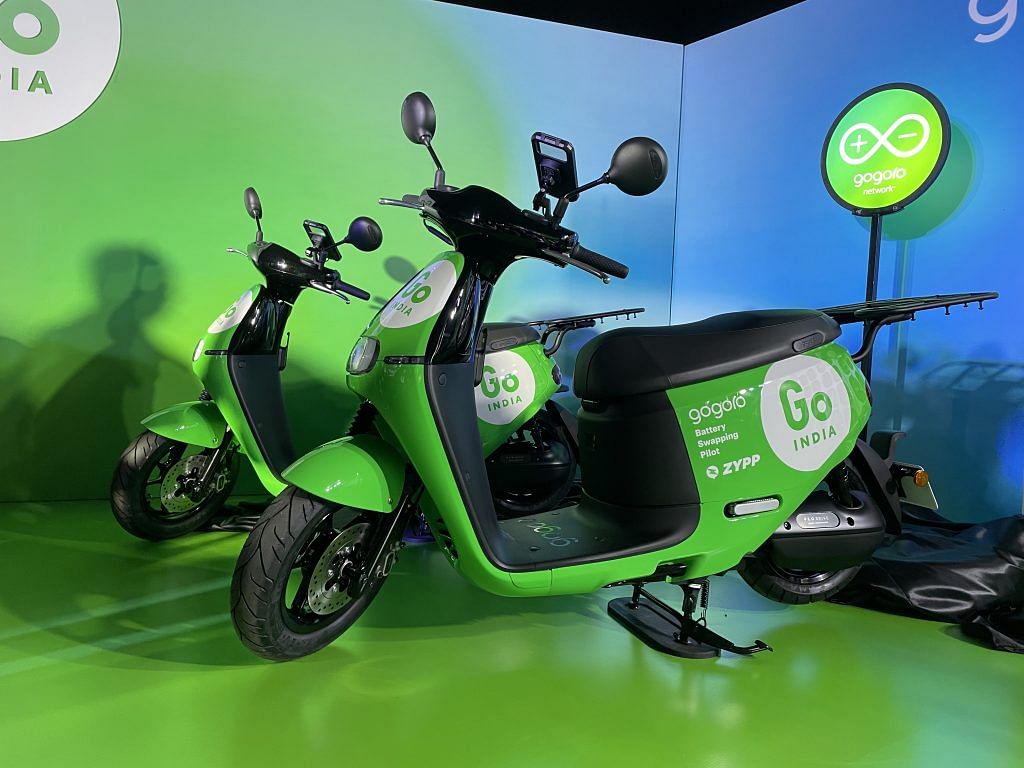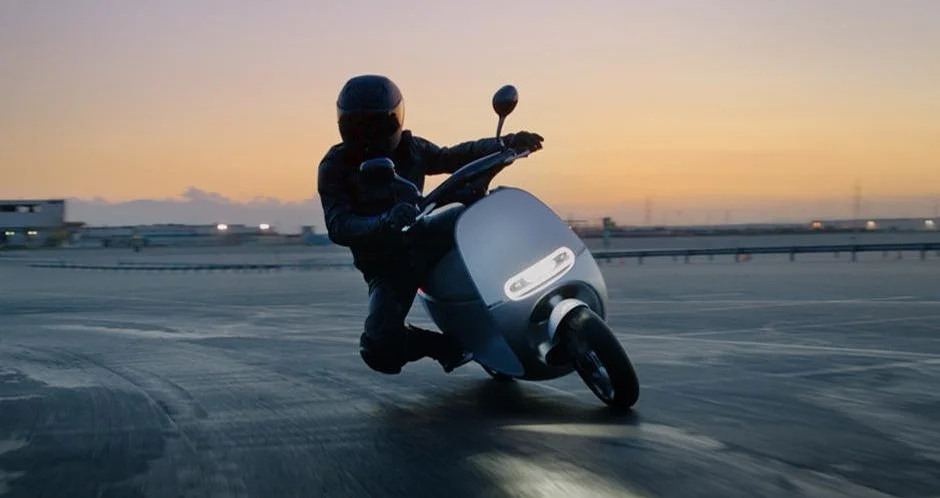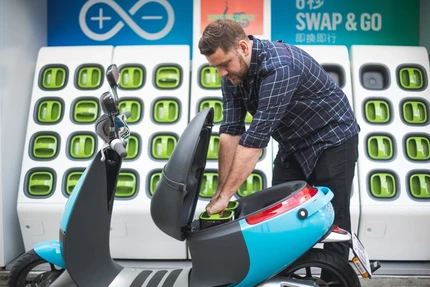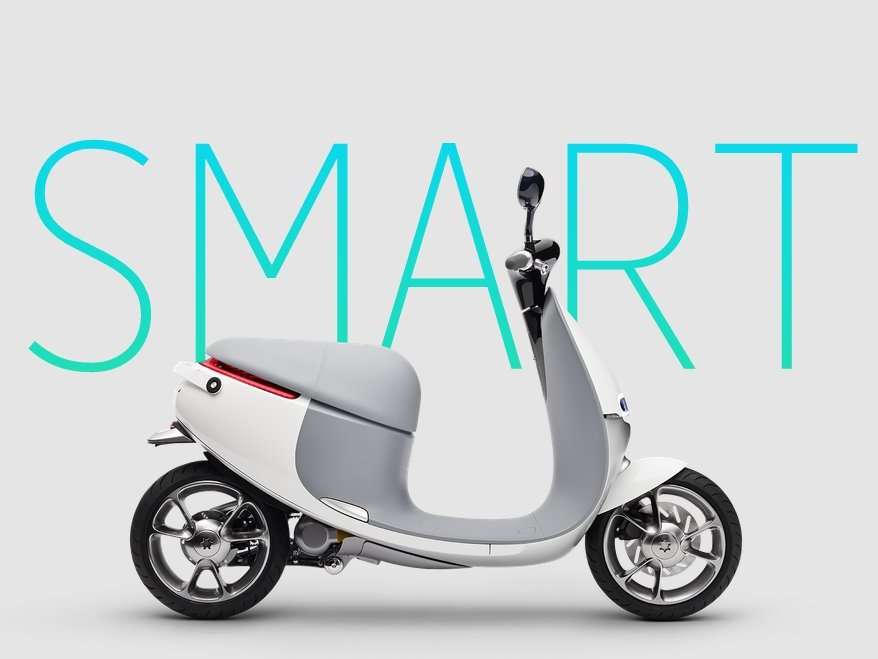Will Gogoro’s Battery-Swapping System Prove To Be A Major Game-Changer for India’s Electric Two-Wheeler Market?
Last week, Gogoro, an electric vehicle manufacturer and battery-swapping company based in Taiwan, launched its operations in India, offering a unique promise in the country's developing EV industry, the ability to swap electric scooter batteries in just six seconds. To test this service, Gogoro has teamed up with Zypp Electric, a rental service for the e-commerce delivery of electric scooters, to conduct a pilot project in the Delhi-NCR region. The pilot program has begun with 100 scooters.

Gogoro is a Taiwanese electric scooter and battery-swapping platform company that has recently announced its entry into the Indian market. The company plans to introduce its battery-swapping technology in India and aims to establish the battery-swapping infrastructure for electric two-wheelers.
Gogoro took a considerable amount of time to enter the Indian market despite being the most recognizable global consumer brand in battery swapping, and while it started its commercial operations in Taiwan in 2015, it has since expanded to several other countries.

So, what caused the delay in its entry into India?
One possible reason is that the Indian electric vehicle market was still in its early stages and lacked the necessary infrastructure to support battery-swapping technology.
Gogoro’s battery-swapping system requires a network of charging stations, which can be expensive and time-consuming to set up. Additionally, Gogoro may have wanted to wait until there was sufficient demand for electric scooters in India before launching its services.
Another factor could be the complex regulatory environment in India, which can make it challenging for foreign companies to navigate. Gogoro may have needed to establish partnerships with local companies or obtain various licenses and permits before entering the market. It seems that it may have found its first partner in Zypp Electric.

Electric Scooter Market, India
India’s electric scooter market is still in its early stages but is growing rapidly as more people become aware of the benefits of using EVs. The Indian government has been actively promoting electric vehicles as a means of reducing air pollution and decreasing the country’s dependence on fossil fuels.
In addition, several incentives and initiatives by the government, such as the Faster Adoption and Manufacturing of (Hybrid and) Electric Vehicles (FAME) scheme, have helped to boost the adoption of EVs in the country.
The FAME scheme offers incentives and subsidies to manufacturers and buyers of electric vehicles to make them more affordable and attractive.
The entry of new players in the electric scooter market, such as Ola Electric and Simple Energy, has also spurred competition and innovation in the sector.
These companies are developing new technologies and offering more features, such as longer battery life and faster charging, to make their products more appealing to consumers.
Despite the growth potential of the electric scooter market in India, there are still some challenges that need to be addressed. These include the high initial cost of EVs, the lack of charging infrastructure, and the limited range of electric scooters. However, with the government’s continued support and the efforts of manufacturers and startups, the electric scooter market in India is expected to grow significantly in the coming years.

The Foundation Before Building
According to Kaushik Burman, Gogoro’s general manager for India, the pilot project with Zypp Electric will serve as a learning experience for the company, and they plan to introduce exciting products tailored to the Indian market in the near future.
To conduct the pilot project, 100 electric scooters were specially imported from Taiwan to India, as stated by Gupta, a spokesperson for Zypp Electric. The company has already covered an impressive 99 million kilometres on its electric-only fleet.
The primary objective of the pilot program is to gather feedback from Indian riders regarding these high-end electric scooters’ performance on Indian roads, driving conditions, and the delivery landscape. This data will be utilized to develop the right model of electric scooters for the Indian market, taking into account factors such as Indian driving habits and the often-difficult terrain and potholes of Indian roads.
Gupta emphasized that it’s crucial to understand how Indian delivery executives will ride the scooters and how the bikes will perform on Indian roads. Based on the pilot’s feedback, the final product is likely to be significantly different from the current pilot vehicle.
To collect feedback, the first fifty Gogoro electric scooters will be provided to experienced delivery executives who are already familiar with electric two-wheelers. They will be followed by the remaining fifty scooters, which will be given to new drivers joining the Zypp platform. This strategy will simulate real-world conditions, as new and seasoned drivers have a 60:40 split on the Zypp platform.
The Most Important – The Battery!
Each Gogoro electric scooter runs on two batteries in parallel, each with a 1.6 kilowatt-hour (kWh) energy capacity and providing a range of 80-90 kilometres per swap. If a rider opts for a battery-swappable bike, it will cost them around INR 200 per day, with all energy costs covered up to a certain distance.
The company claims that its batteries can last for up to 12 years and are AI-controlled to manage charging more efficiently.

Safety!
Gogoro has also emphasized its vehicles’ safety, stating that it measures every cell of its battery at the time of manufacturing to ensure that no weak cells are present, which could cause the battery to explode.
Additionally, Gogoro’s electric scooters have a water-wading capacity and a high level of security features, making them difficult to steal.
The company aims to provide an affordable solution for the Indian market, stating that a similar battery and swap station power a USD 2,000 scooter in Taiwan and a USD 340 one in China. The battery-swapping system offers increased uptime, reduced range anxiety, and a larger revenue from services, making it an attractive business model.
Gogoro’s emphasis on durability, safety, and affordability is commendable. Longer battery life of 12 years is impressive and can significantly reduce the carbon footprint associated with battery production and disposal. Moreover, the use of artificial intelligence to control charging is a smart move, ensuring that the batteries are charged efficiently and without compromising their longevity.
The claim that Gogoro’s two-wheelers can ride through heavily waterlogged streets is also noteworthy. This feature can be particularly useful in areas that are prone to flooding, allowing riders to navigate through such areas without any issues.
Why So Late In India?
Gogoro was cautious about launching in India due to its large population of 1.3 billion people and their demanding nature. The company planned to conduct pilot deployments with 10-20 swapping stations to collect data, customize vehicle hardware, and test road and environmental conditions to ensure that their battery ecosystem could meet the needs of all market segments.
As proof of concept increases, Gogoro would scale its network with just-in-time capital expenditure deployment. Gogoro’s smart scooter has unique security features that make it very difficult to steal, and Kotak Mahindra Bank, which has partnered with Gogoro and Zomato, plans to use these features.
What’s the Plan?
Gogoro has partnered with Foxconn to manufacture the battery system, and Luke prefers partnerships as he doesn’t have to build the motor or vehicle. The company has a modular factory set up in Taiwan and plans to expand to other markets based on the maturity of pilots. In India, Gogoro plans to finance its network expansion with local partners and intends to generate revenue through hardware sales and software-as-a-service license fees for using its battery-swapping solution.
The company’s recurring revenue from swapping services is a key aspect of its business model. In Taiwan, Gogoro expects 54% of its lifetime revenue to come from battery subscriptions, and in FY22, 32% of its revenue came from this revenue line. While Gogoro is still in the investment phase and made 15% gross margins last financial year, its EBIT margins were deep in the red.

The Last Bit, Gogoro’s focus on sustainability and customer satisfaction is a step in the right direction for the electric vehicle industry. By prioritizing durability, safety, and affordability, the company is not only creating a positive impact on the environment but also ensuring that its customers get value for their money.




